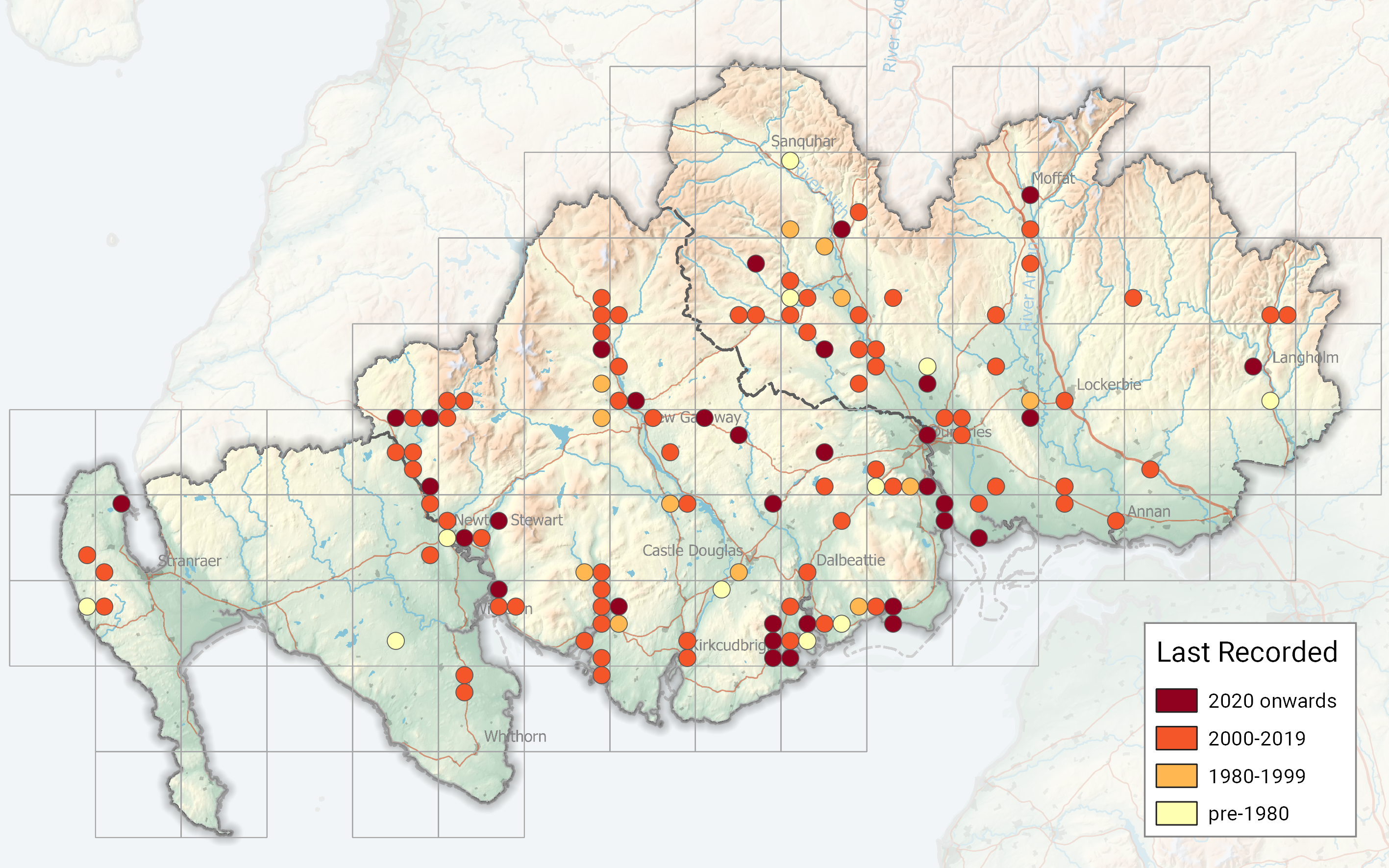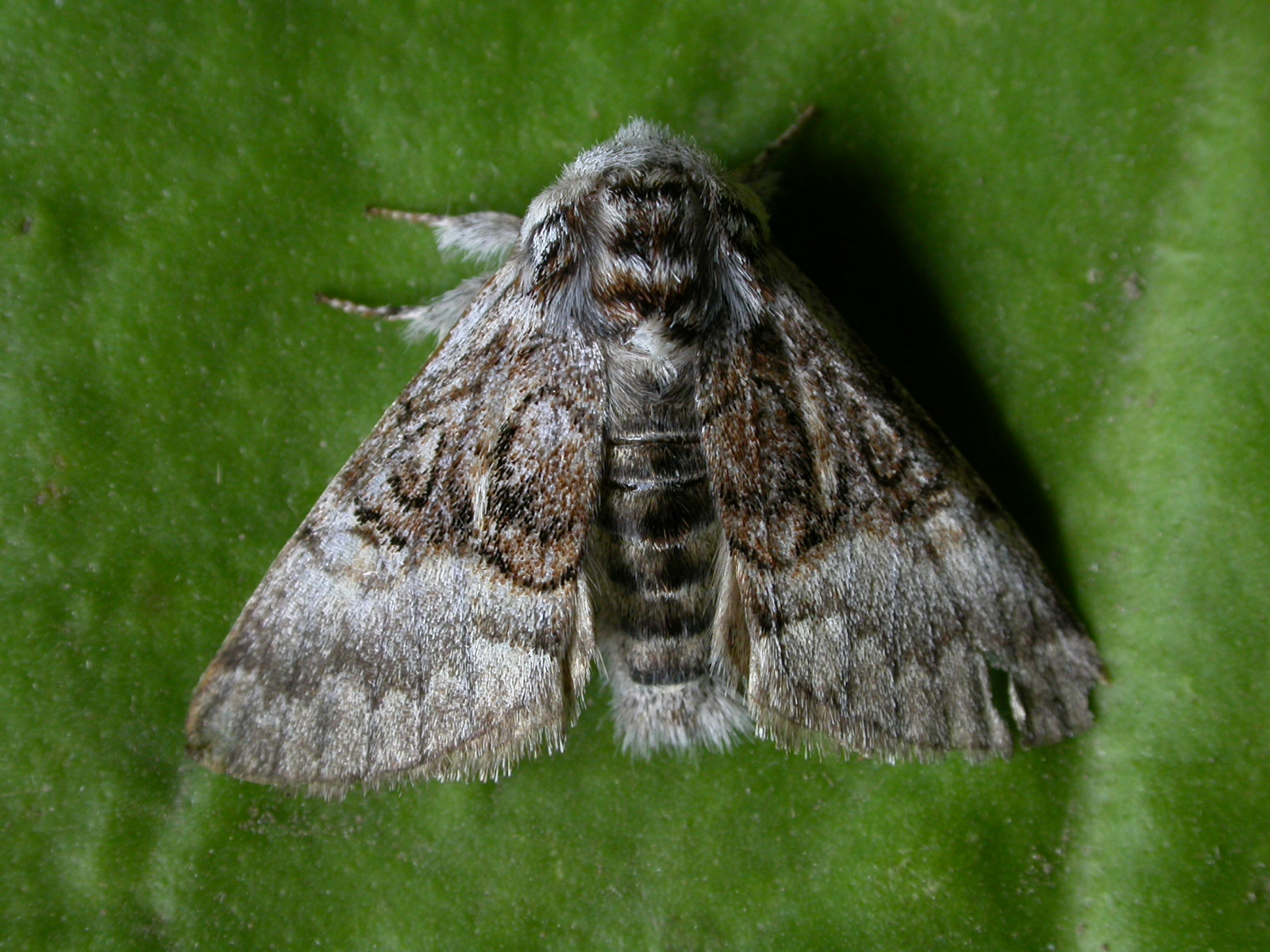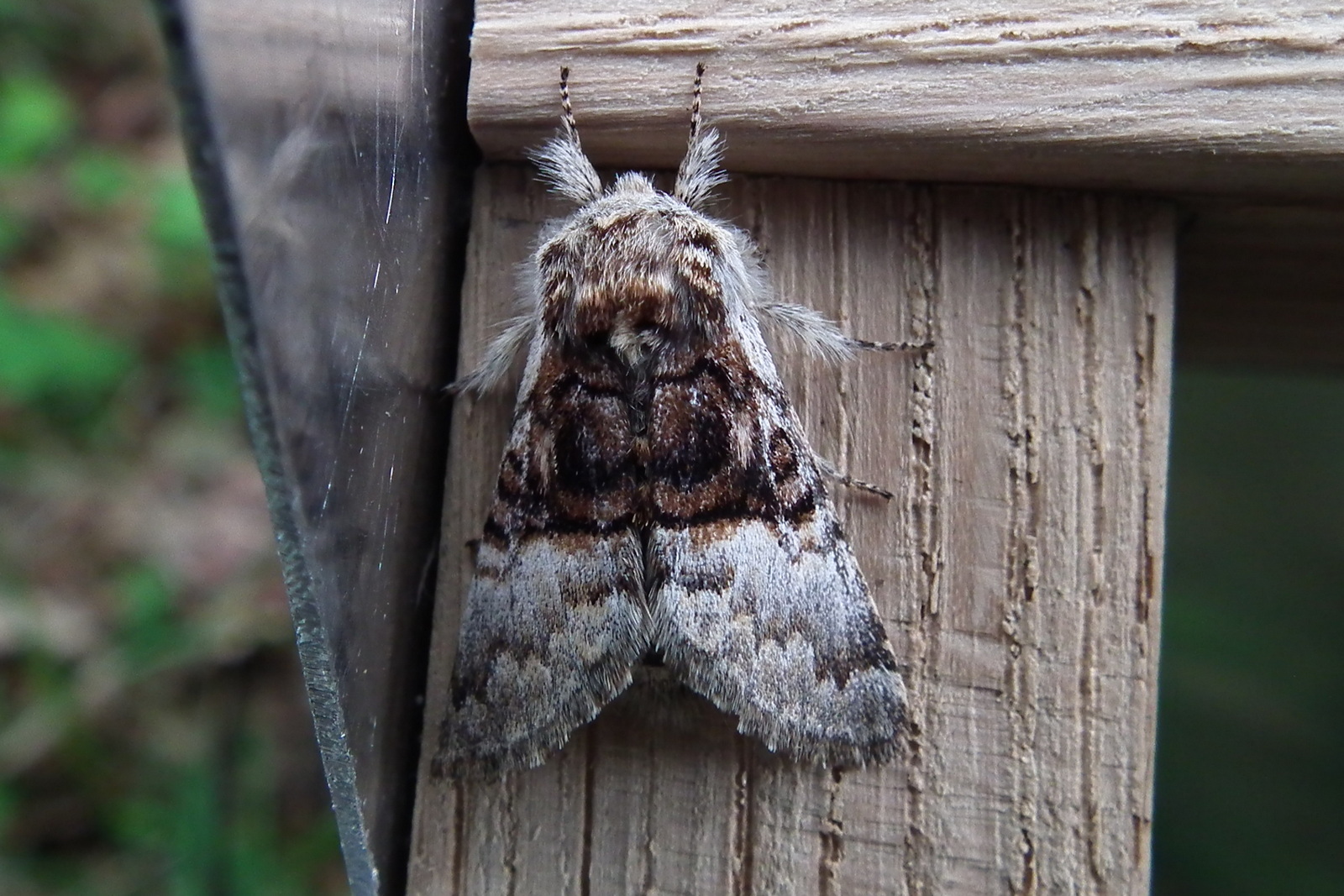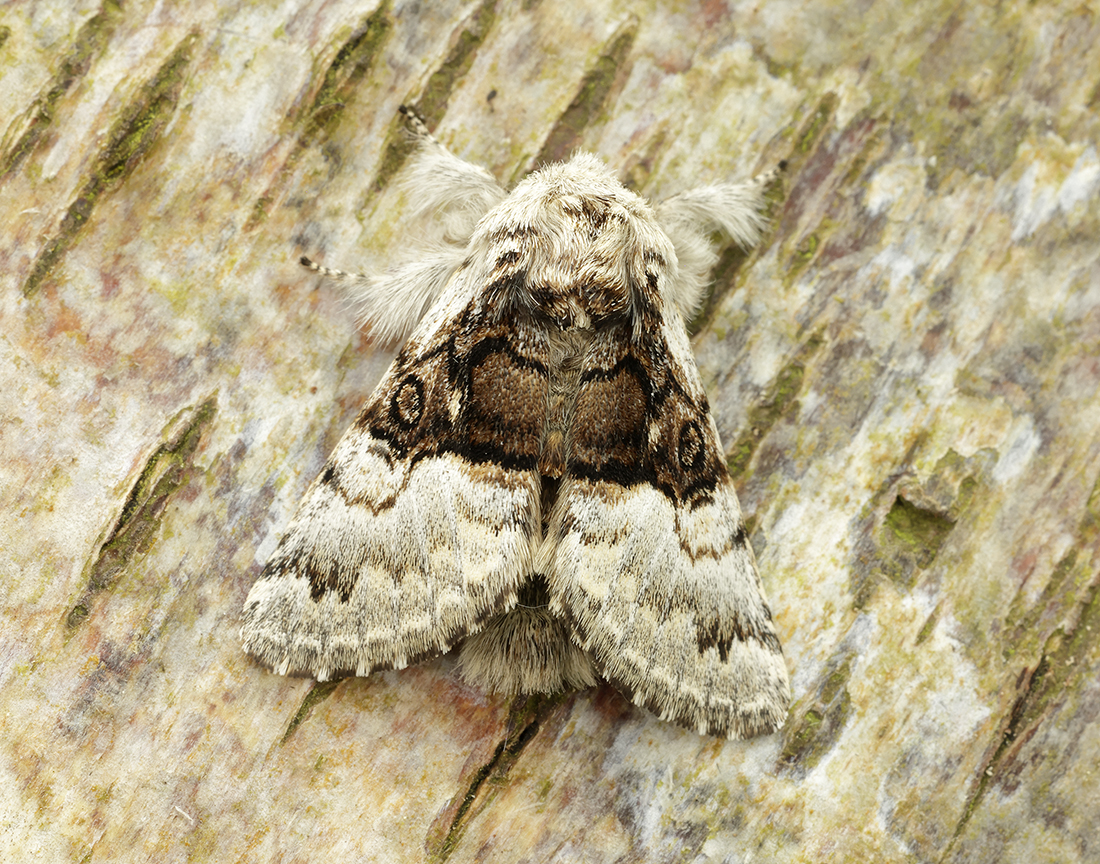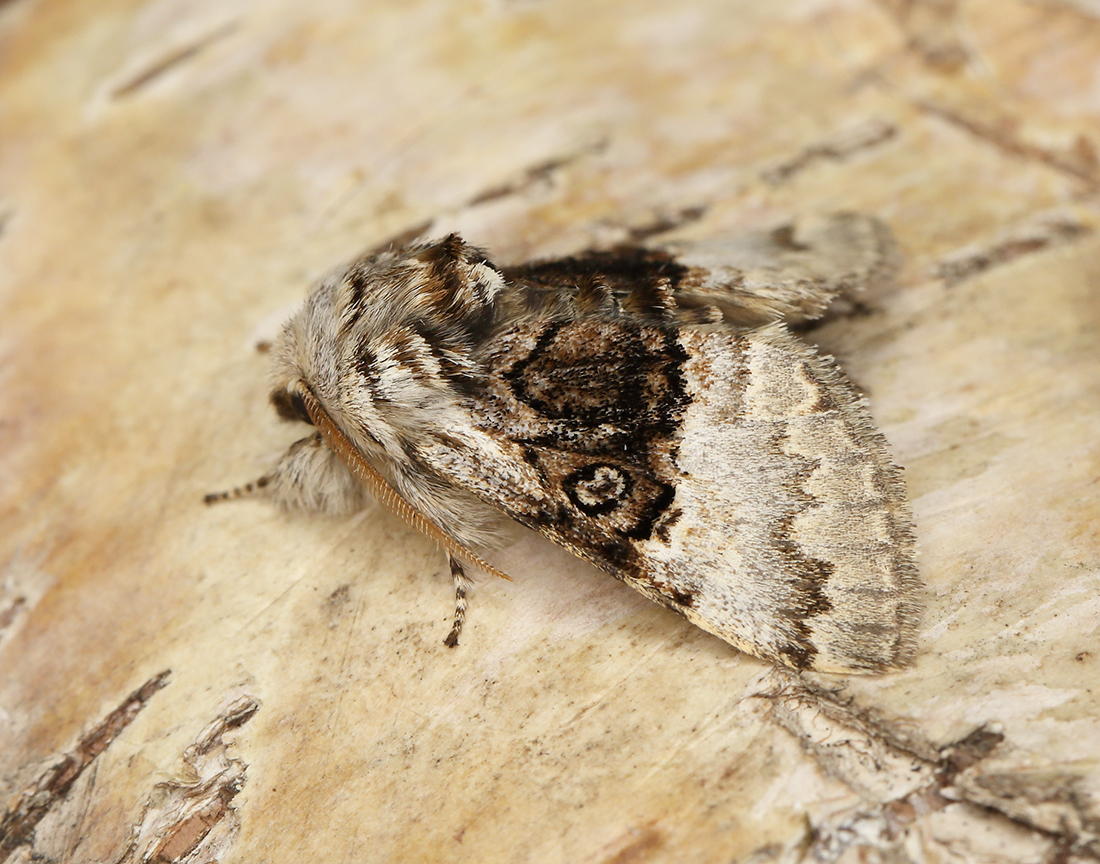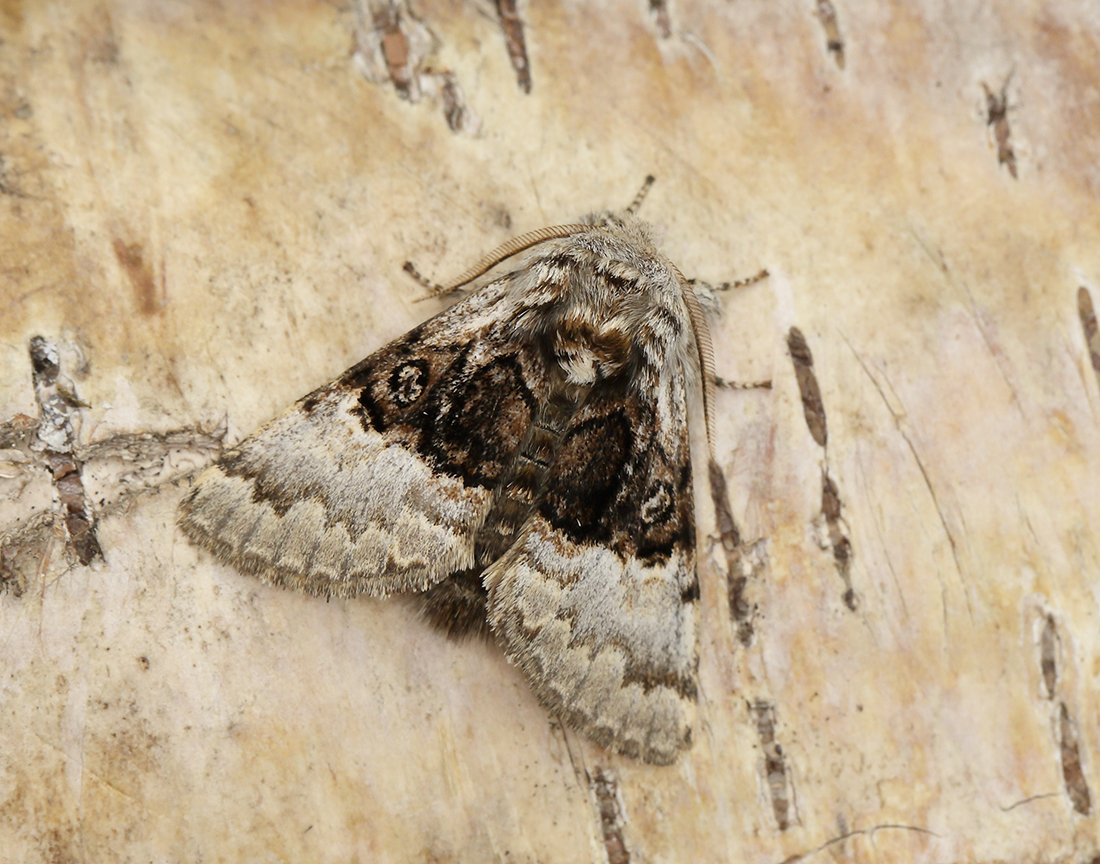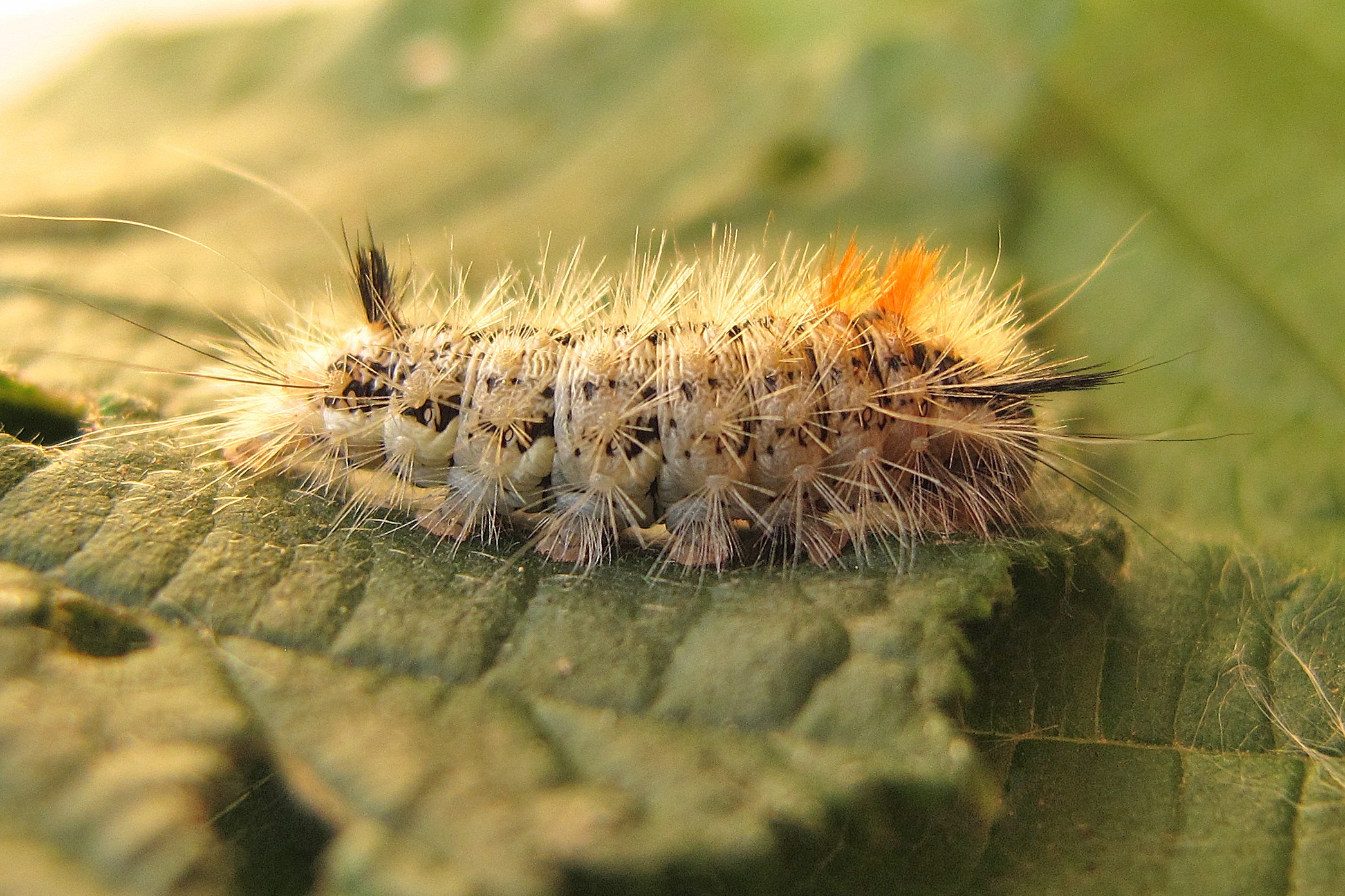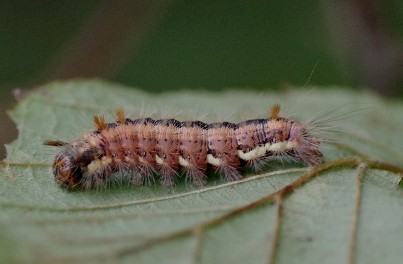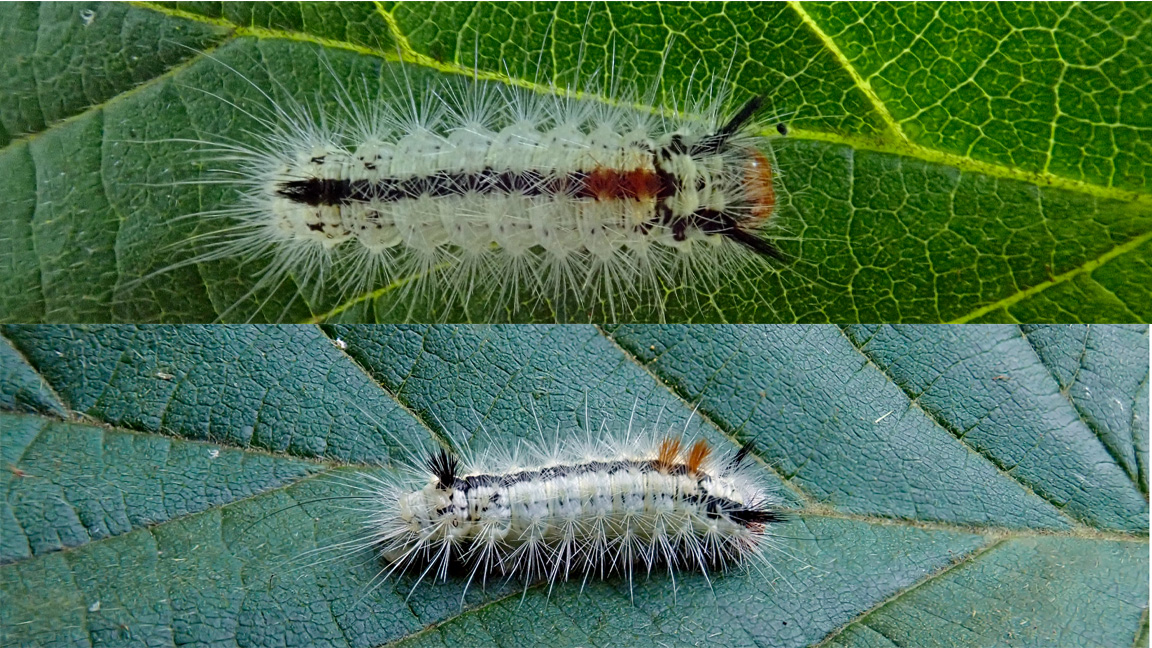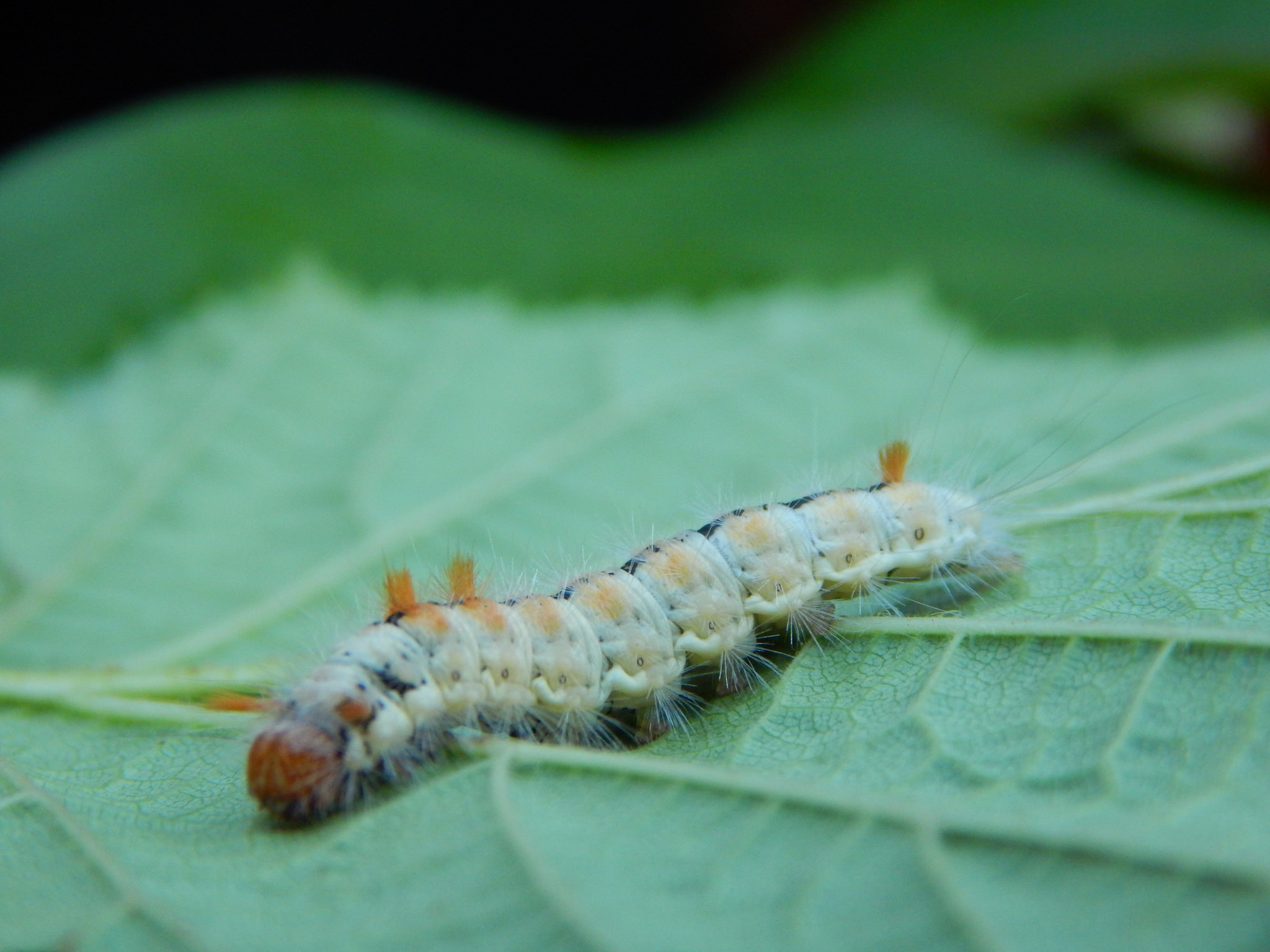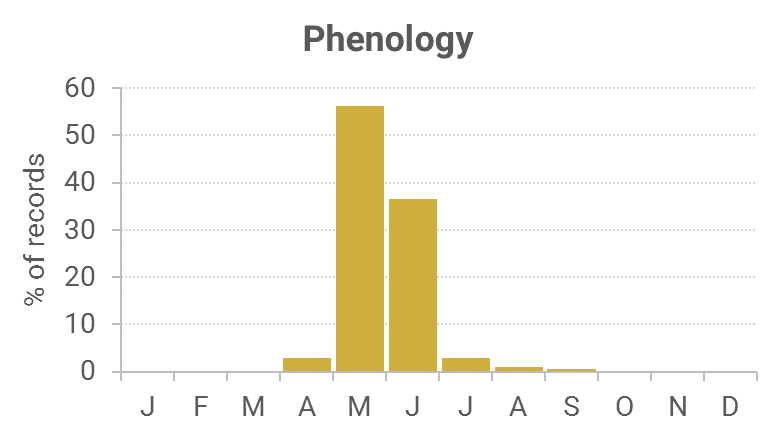Identification
Unmistakable.
Recording Method.
Male attracted to light, females less so..
Life cycle
Probably two overlapping generations. Overwinters as a pupa in a cocoon, close to the ground in leaf litter or under moss. Larvae are present late May to September.
Larval foodplants
Mainly Downy Birch and Hazel, but also other broadleaved trees.
Habitat
Broadleaved woodland.
History
In August, 1858, Somerville, while on a visit from his home in Glasgow to the Moffat area had found the larvae on hazel. Lennon (1863) had found it not common but had noted it at Lochaber in the Mabie Forest (VC73). Douglas-Robinson (1870-71) had also noted the larvae on nut in August on Almorness (VC73). The Gordon brothers had found it very common at light at Corsemalzie so much so that on 17th May 1911 there were 26 individuals on the sheet at the same time. They had found the larvae abundant on birch and lime in August, 1910. Earliest date was 14th May 1911.
Sir Arthur Duncan (1909-84) during his lifetime had found it at Closeburn, Tynron and Castlehill, Dumfries (all VC72). Pelham-Clinton during 1963-67 had found it Palnackie, Rockcliffe, Bargrennan and Wood of Cree (VC73).
At Irvine House Lodge, Auchenrivock (VC72), a fine series was trapped at light during 1974.
During 1974-93 six of the seven Rothamsted stations trapped 100 records, Caerlaverock being the odd one out.
It was also trapped regularly on the Hensol Estate during 1981-85.
From 1993 to 2010 it was trapped at the regular home sites and further afield, amounting to 300 records, but only a handful were from Wigtownshire.
In the form medionigra Vorbrodt the basal area of the forewing is of a dark brown while the termen end is of a light grey. I suspect that this is our usual form in the Region.

